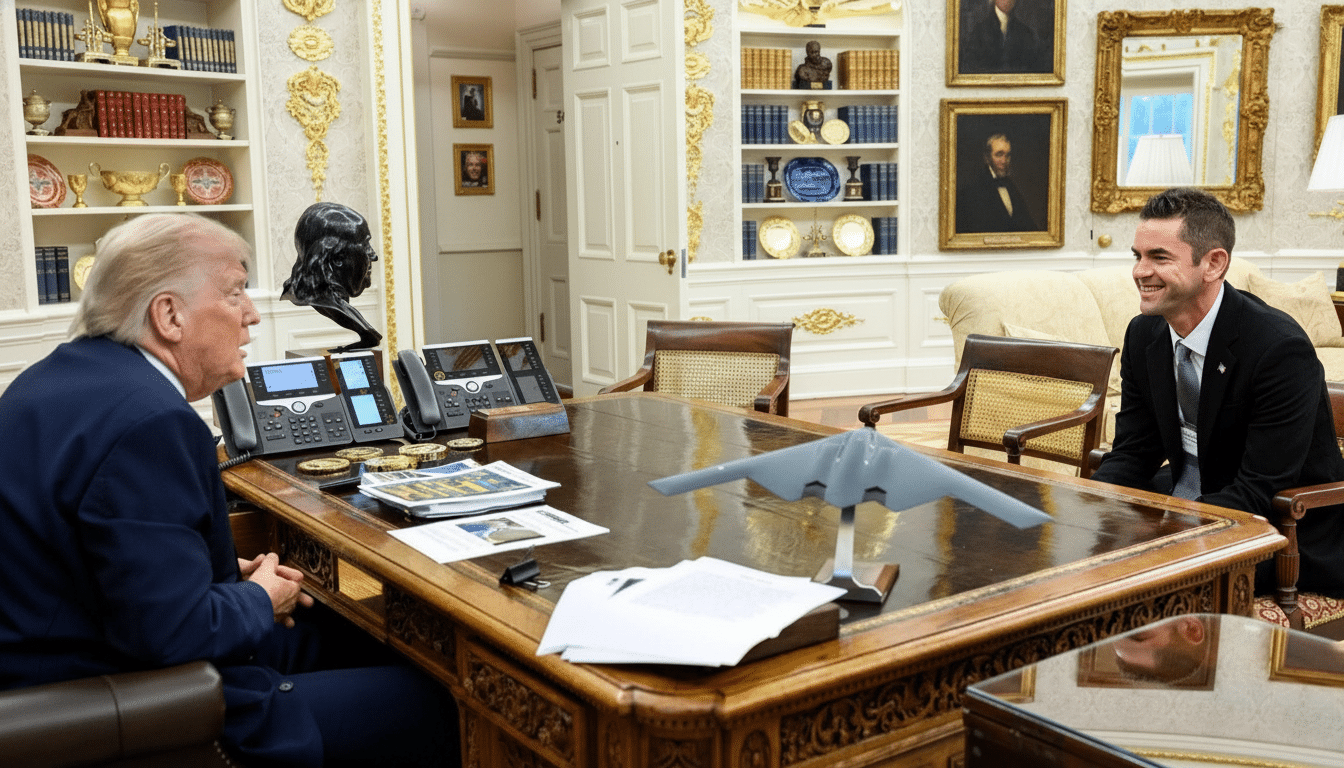President Donald Trump has reversed himself and is stepping forward to renominate Shift4 founder Jared Isaacman as NASA’s administrator, reinstating a prominent pick after months of sluggishness and an online firestorm. The decision, revealed in a statement on Trump’s social media platform, intensifies weeks of public pressure from distinguished figures in the space community and comes as the space agency confronts challenging program deadlines and financial woes.
Isaacman, a billionaire pilot and private astronaut who financed both the Inspiration4 and Polaris missions, confirmed the news and thanked supporters in an X post announcing his change of heart. The pivot follows a turbulent chapter in which Secretary of Transportation Sean Duffy acted as NASA administrator on an interim basis, catching flak from industry figures including Elon Musk.

A Nontraditionalist With Strong Commercial Cred
Isaacman is most famous for starting the publicly traded payments company Shift4 and personally getting SpaceX to carry out milestone commercial spaceflights. It was also the first all-civilian orbital mission, and Inspiration4 in 2021 raised hundreds of millions for St. Jude Children’s Research Hospital. His Polaris Program hopes to take private astronaut abilities even further with the first commercial spacewalk.
He has no government experience, but Isaacman’s supporters say his operational background and flight history, paired with a willingness to assume technical risk, will turn him into an agent for speed and accountability. Critics say NASA’s $25B‑plus portfolio calls for a seasoned public-sector manager who speaks the language of appropriations, oversight and civil-service culture. In the end, it will be up to the Senate to determine whether his entrepreneurial profile suits the job.
Why the Reversal Matters for NASA’s Priorities and Plans
The agency is juggling an uncharacteristic set of priorities — keeping Artemis on track, preventing a post‑ISS gap in low Earth orbit and navigating cost scrutiny from watchdogs. The NASA Office of Inspector General has twice cautioned that Artemis costs are likely to be above established projections, and overall costs through the mid‑decade are estimated “in excess of $90 billion” for SLS, Orion, ground systems and support programs. Pressure is building on the schedule with human lunar landing architectures solidifying and major tests on the horizon.
Leadership clarity also affects contracting. NASA has doubled down on public‑private models for crew and cargo transport, lunar landers, and the delivery of science payloads. Those have succeeded in reducing launch costs and accelerating schedules, but they rely on crisp governance to manage risk, competition and vendor performance. A strong administrator not only sets priorities among those directorates, but also shapes its budgets with the Office of Management and Budget in negotiations with Congress — work that’s been complicated by an interim setup.
Isaacman’s Stated Vision and Policy Signals
Before the announcement, Isaacman issued a vision for NASA on X after a draft was circulated in Washington, saying he wanted to lay any speculation to rest about his candidacy and the interim leadership. While he did not release an extensive policy blueprint, his public record contains some hints: pushing competitive commercial procurements, fast test‑fly‑learn cycles and crew safety rooted in the flight experience of hardware.

Those themes are expected to translate into support for fixed‑price contracts where appropriate, more reliance on commercial launch and in‑space services, and a push to reduce program risk through more frequent on‑orbit demonstrations, industry observers say. He stands to inherit not just ambitious hard problems but also fragile science priorities, from re‑scoping Mars Sample Return to the continuity of Earth observation, where alignment among stakeholders — not only speed — will be key.
Inevitable Confirmation Scrutiny in the Senate
Isaacman’s nomination will be reviewed by the Senate Commerce, Science and Transportation Committee, and conflict‑of‑interest questions are sure to dominate. As an ostensible SpaceX customer and partner, Isaacman would be expected to recuse himself from procurement decisions involving firms with which he has financial arrangements, contractual relationships or personal connections. Guardrails would be established by federal ethics rules and by NASA’s designated agency ethics official. The Government Accountability Office has long underscored the importance of transparent acquisition processes in big space programs.
Anticipate pointed questions on awards for the Artemis lander, Commercial Low Earth Orbit Destinations and cargo and crew task orders, where competition is still fraying nerves. The committee will also delve into how he intends to balance human spaceflight goals with NASA’s science portfolio of billion‑dollar flagship missions and a pipeline of smaller Explorer and Discovery projects that are increasingly vulnerable to cost overruns.
Implications For Artemis And Low-Earth Orbit
Choices made in the next year will set America’s near‑term lunar and LEO strategy. It will be Artemis II crew flight readiness, docking and rendezvous testing, and human landing system capabilities that are on the critical path. Amid all of this, the clock is also ticking toward retirement of the International Space Station, and NASA faces its own schedule risks for its commercial station program. The NASA OIG has raised concerns about those risks, as have outside experts. Whether the U.S. avoids an access gap will be determined by a leadership team that can align contractors, certify systems and ensure continued congressional support.
If confirmed, Isaacman would take over at a time with U.S. launch cadence at historic levels and commercial players rewriting the economics of space. His task, if confirmed, will be to capitalize on that momentum without undermining NASA’s safety culture and the scientific integrity of its missions. The White House’s reversal amounts to a bet that a commercially focused administrator can thread that needle. The Senate’s judgment will be the measure of whether that bet is a winning one.

